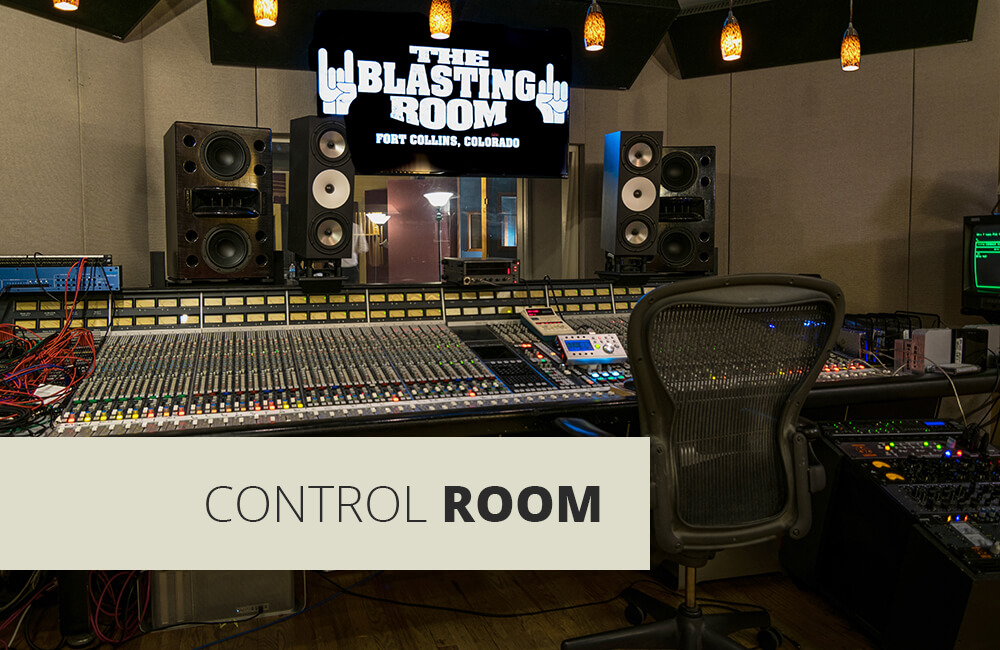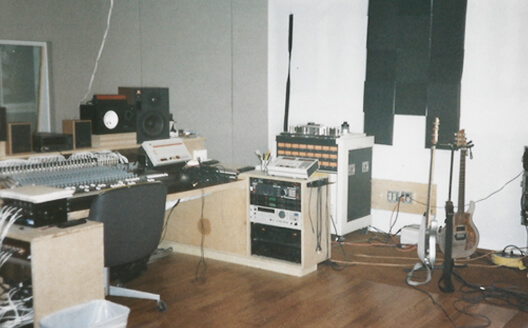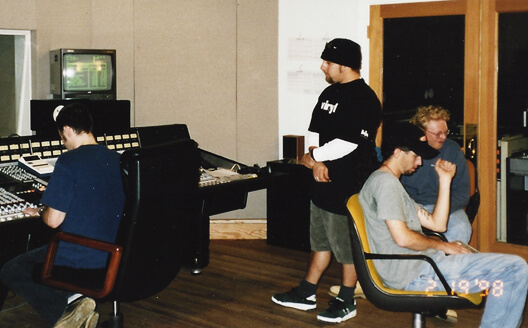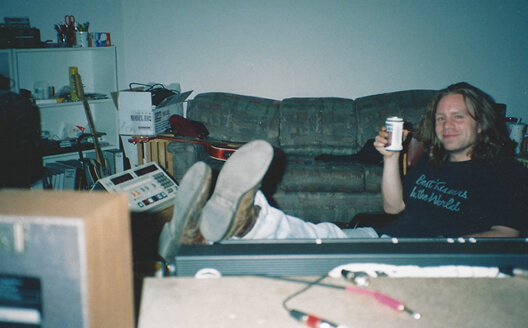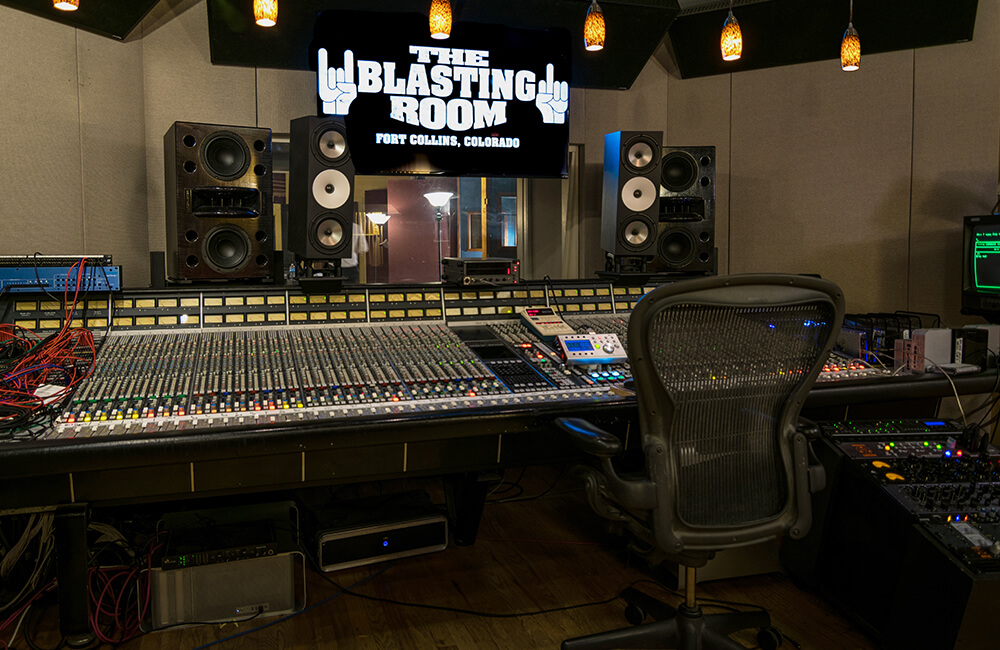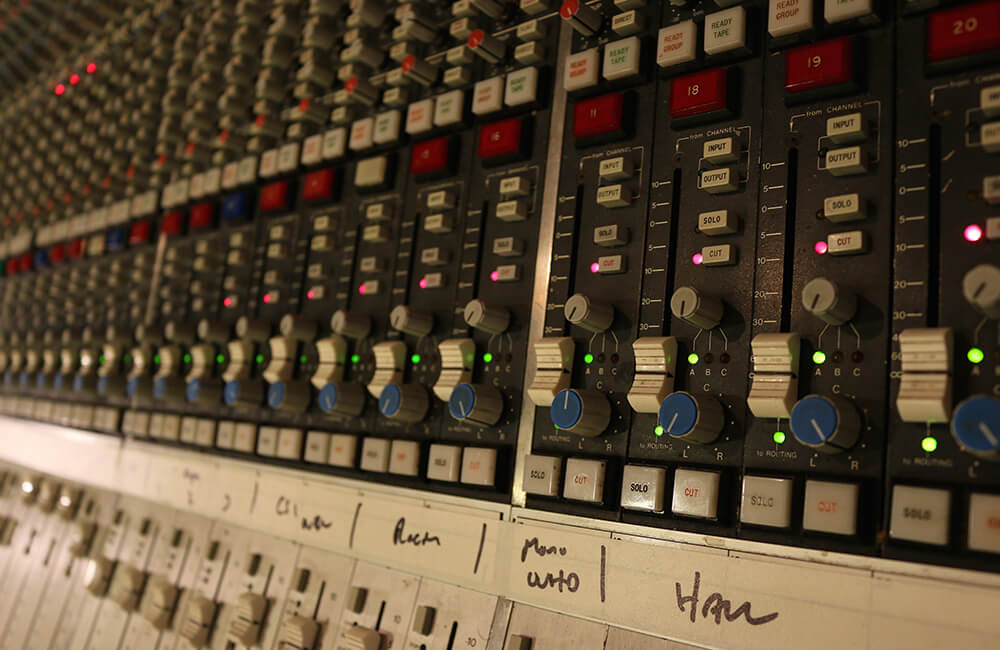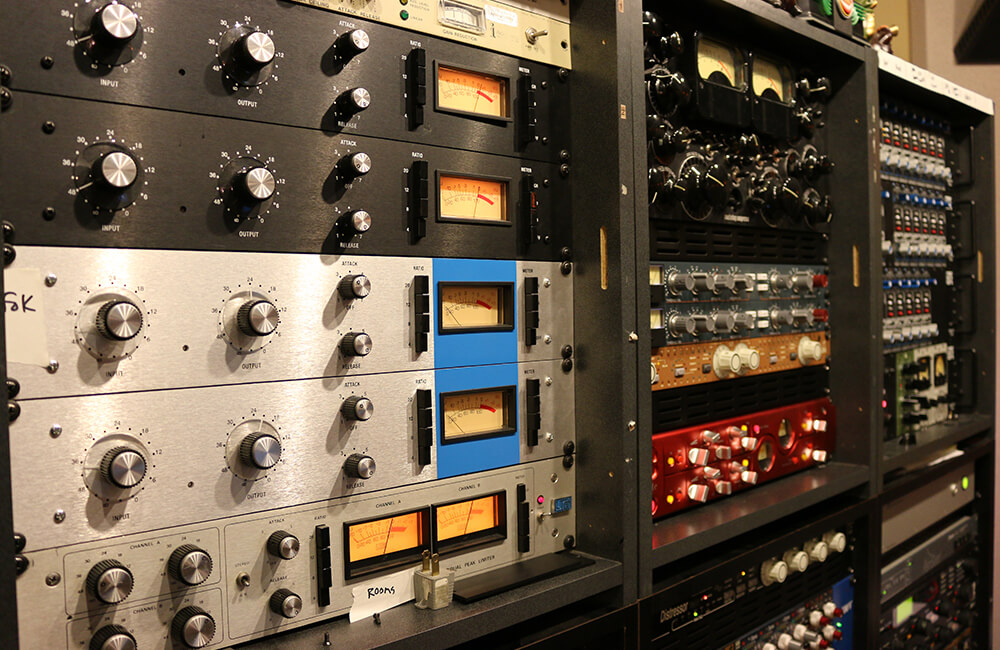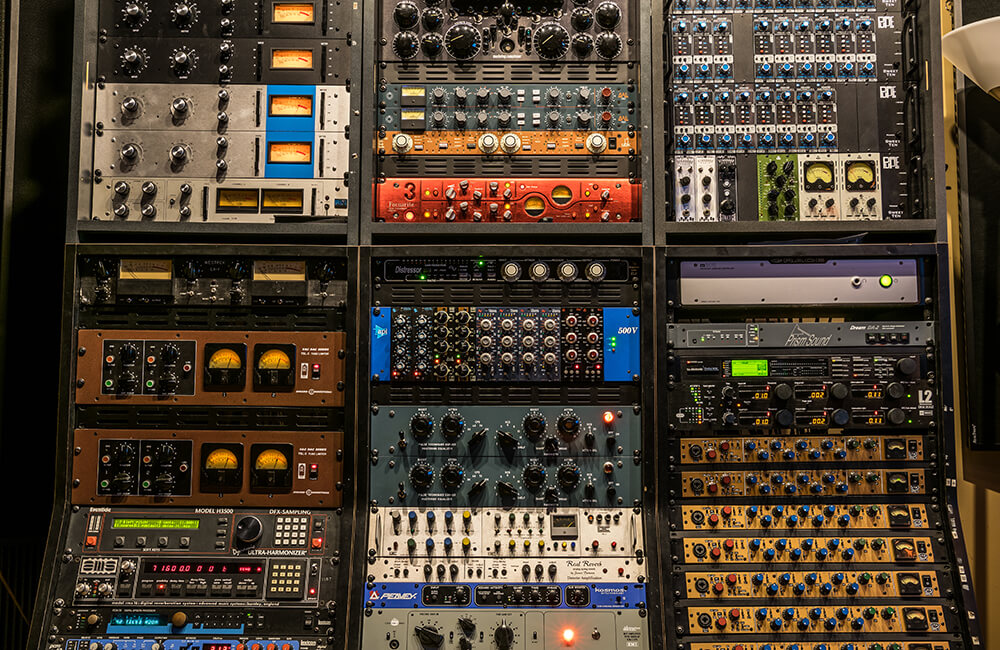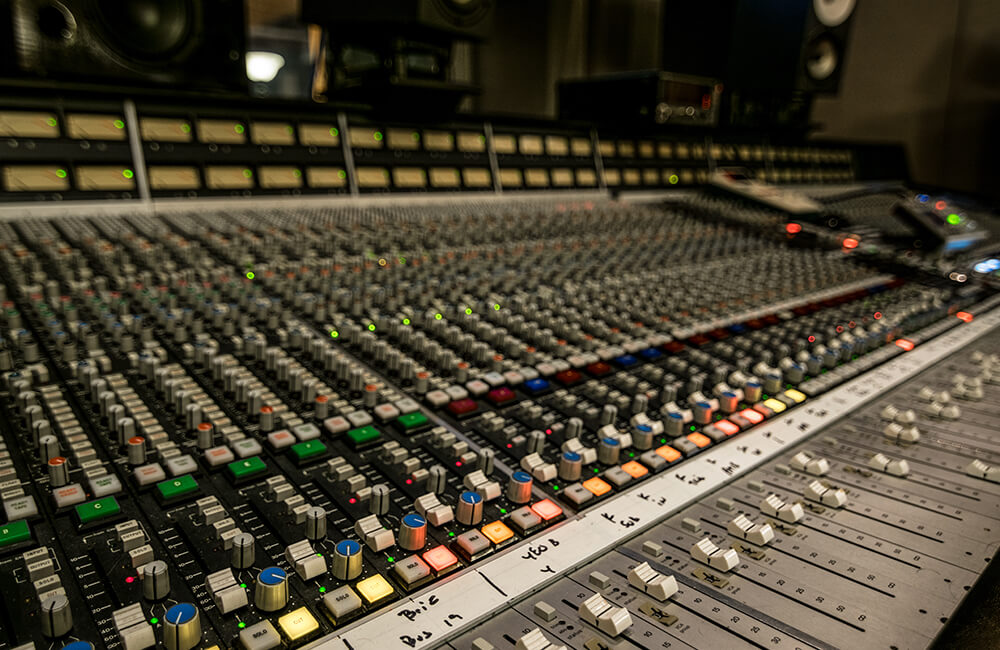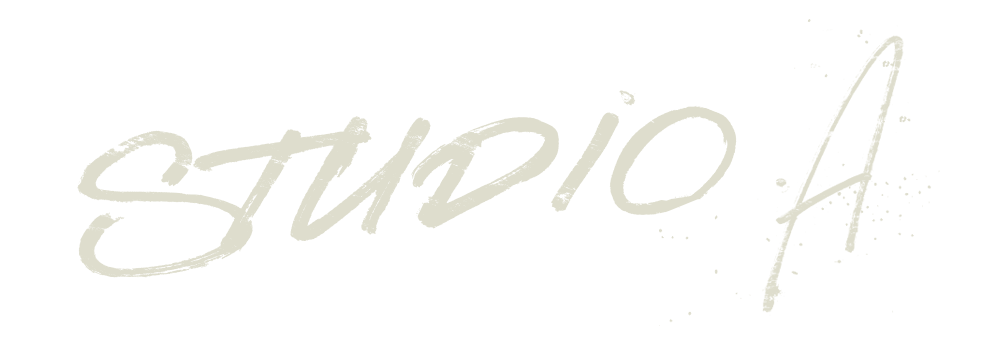

Console
Solid State Logic SL6000E with G Series computer. 56 input console, VCA automation and Total Recall.
DAW / Converters
(1) Pro Tools Ultimate
(1) Avid HDX Card
(1) UAD Octo Card
(1) IZ Technology ADA II
(2) Avid HD I/O 16×16
(1) Avid HDX Card
(1) UAD Octo Card
(1) IZ Technology ADA II
(2) Avid HD I/O 16×16
Tape Machines
(1) Otari MTR 90/3 2″ 24 track analog tape recorder
(1) Ampex ATR 102 1/4″ and 1/2″ 2 track analog tape recorder with varispeed
(1) Ampex ATR 102 1/4″ and 1/2″ 2 track analog tape recorder with varispeed
Monitors
(2) Dutch & Dutch 8c
(2) Avantone MixCubes
(2) Avantone MixCubes
Preamps & EQ
(8) Undertone Audio MPEQ-1
(20) CAPI VP28
(1) AEA Dual Channel Ribbon Pre
(2) Pulse-Tec EQM-1S3 EQ
(1) Hendyamps Michelangelo EQ
(2) Pultec EQP-500s
(2) Kush Audio Electra EQ
(2) API 550b EQ
(2) Avedis E27
(1) Peavy Kosmos
(1) Aphex Exciter and Big Bottom
(20) CAPI VP28
(1) AEA Dual Channel Ribbon Pre
(2) Pulse-Tec EQM-1S3 EQ
(1) Hendyamps Michelangelo EQ
(2) Pultec EQP-500s
(2) Kush Audio Electra EQ
(2) API 550b EQ
(2) Avedis E27
(1) Peavy Kosmos
(1) Aphex Exciter and Big Bottom
Compressors
(1) Inward Connection TSL-3 Vac Rac Tube Limiter
(2) BAE 10DC
(1) IGS V8 Compressor
(1) Highland Dynamics BG2
(2) Empirical Labs EL8 Distressor
(1) Fatso Mod Kush Audio UBK
(1) Urei 1178 compressor
(1) Orange County Stressor
(1) Hairball Audio 1176 Rev A
(3) Hairball Audio 1176 Rev D
(1) Inovonics Model 201
(1) Standard Audio Stretch
(3) Standard Audio Level-Or
(1) Valley PR2A Stereo De-Esser
(2) DBX 902 De-esser
(1)SPL Transient Designer 4
(2) BAE 10DC
(1) IGS V8 Compressor
(1) Highland Dynamics BG2
(2) Empirical Labs EL8 Distressor
(1) Fatso Mod Kush Audio UBK
(1) Urei 1178 compressor
(1) Orange County Stressor
(1) Hairball Audio 1176 Rev A
(3) Hairball Audio 1176 Rev D
(1) Inovonics Model 201
(1) Standard Audio Stretch
(3) Standard Audio Level-Or
(1) Valley PR2A Stereo De-Esser
(2) DBX 902 De-esser
(1)SPL Transient Designer 4
Effects
(1) AKG BX20E1 Spring Reverb
(1) Echoplate II Plate Reverb
(1) AMS RMX16 digital reverb
(1) Bricasti M7
(1) Lexicon 480-L
(1) Lexicon PCM70 reverb
(1) Lexicon PCM42 Digital Delay Processor
(1) Yamaha SPX1000
(1) Yamaha SPX900
(1) Echoplate II Plate Reverb
(1) AMS RMX16 digital reverb
(1) Bricasti M7
(1) Lexicon 480-L
(1) Lexicon PCM70 reverb
(1) Lexicon PCM42 Digital Delay Processor
(1) Yamaha SPX1000
(1) Yamaha SPX900
Rooms
(1) Control Room 19’x18-1/2’x8′
(1) Tracking Room 31’x21’x9′
(1) Large Isolation booth 9’x8’x9′
(2) Small Isolation booth 9’x3’x9′
(1) Tracking Room 31’x21’x9′
(1) Large Isolation booth 9’x8’x9′
(2) Small Isolation booth 9’x3’x9′

History.
Upon arriving in Fort Collins in the fall of 1994, the members of ALL, along with Stephen’s father Dan and the studio’s first intern and now chief engineer Jason Livermore, began building the studio and what is now referred to as Studio A. With band members sleeping on the floor and the control room’s roof caving in, construction began with a trademarked Blasting Room beginning. Nonetheless, three months later the studio was complete and already booked for months. Having been the sole recording room at The Blasting Room for the first decade of its existence, Studio A has been on a long and ever-evolving journey from its more simple beginnings with a 36-channel Mackie console, tape machines, and handful of choice pieces of outboard gear and microphones. In 1997 the studio obtained its 56-channel SSL console from Babyface, which marked a turning point for The Blasting Room as it became the first studio in the region with a board of that size and capacity.

